Dining in Paris: The once scruffy neighbourhood of Belleville is now home to an exciting new food scene
This buzzing quartier is home to some of the French capital’s coolest cuisine, much of it pioneered by female chefs. Here are six of its most delicious – and daring – restaurants.
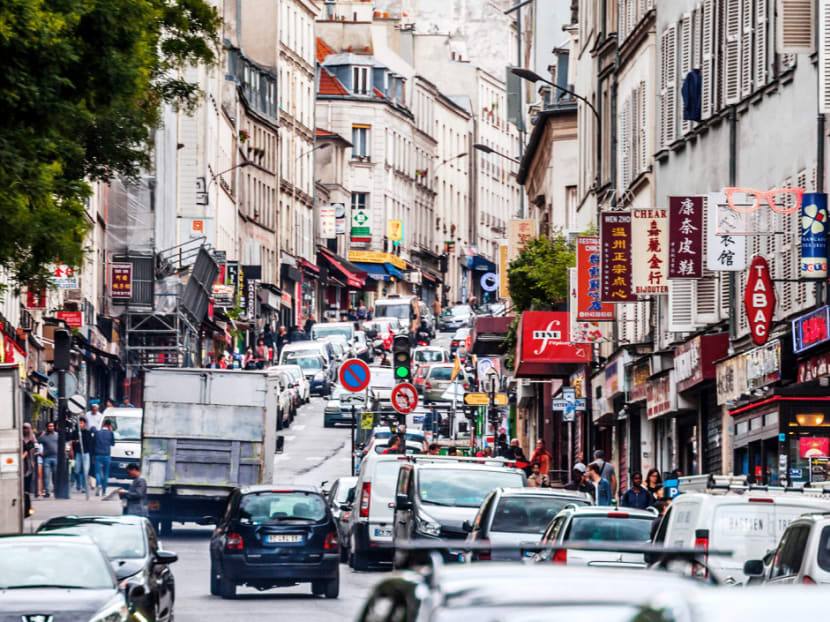
The neighbourhood of Belleville has rapidly made a name for itself as one of the most exciting areas to eat and drink in Paris. (Photo: iStock)
It wasn’t so long ago when, if you invited a discerning Parisian to Belleville for dinner, you would likely have been met with a condescending pat on the shoulder and a counter-invite to one of the more salubrious parts of the city. Why go to that scruffy neighbourhood when Paris has so many other gastronomic delights on offer?
But in the past few years, Belleville, spanning four arrondissements and sandwiched between Buttes-Chaumont park and Pere Lachaise cemetery in the northeast of the city, has rapidly made a name for itself as one of the most exciting areas to eat and drink in the French capital.
Historically, it has tended to be on the cultural fringe. Once an independent municipality, Belleville was annexed into the city of Paris in 1860. Eleven years later, people from this traditionally working-class area, radicalised in part by their working conditions, were instrumental in forming the Paris Commune, an autonomous socialist group that governed Paris for two months before being crushed by the French army.
In the early 20th century, thousands of Jews fleeing persecution settled in Belleville. Since the 1980s, it has become home to a thriving Chinese and Asian community.
Below are a selection of some of our favourite restaurants, almost all of them with owners or head chefs who are women, dotted along the steep side roads of Belleville, and between two beautiful parks that are perfect for strolling between meals or reclining with a book on a summer’s day.
LE GRAND BAIN
14 Rue Denoyez, 75020 Paris
We start our culinary tour on Boulevard de Belleville, home to a bustling local market. To whet your appetite, pick up some fresh oysters to slurp with a Lillet and tonic at one of the many bars that line the street.
When you’re ready for something more substantial, head away from the hubbub to Le Grand Bain. Its somewhat hidden location on a graffiti-covered side street was a deliberate choice for manager and co-founder Edouard Lax.
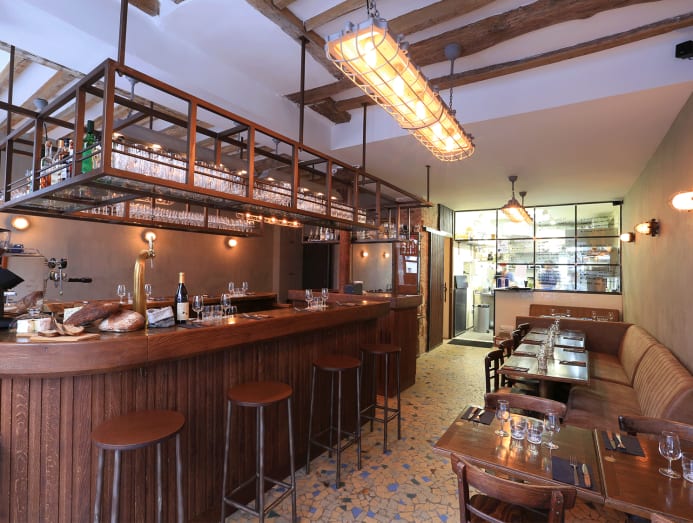
“When we opened in 2017, everyone said we were crazy – there were drug dealers outside,” he said. But, he added, “we wanted to create that feeling of finding a gem.” Though the neighbourhood has become increasingly attractive to wealthier Parisians and visitors, it still feels down to earth.
With an industrial aesthetic arranged around a central bar, the glow of lamps and chatter of other guests soften the atmosphere.
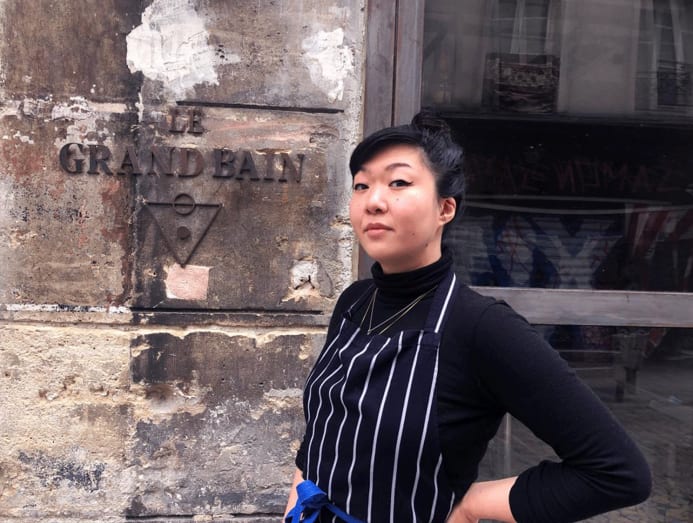
Head chef Emily Chia, who trained at St John in London, delicately balances finesse and fun, creating intricate dishes that don’t feel stuffy. On a recent visit, scallop tartare with shaved fennel and persimmon, haddock and courgettes with a saffron sauce, and indulgent wild mushrooms on brioche all stood out. A cheesecake topped with oozing figs finished the meal perfectly, and we managed to drag ourselves away before ordering another cocktail and staying past midnight.
The rapidly changing seasonal menu is complemented by low-intervention wines, all of which are organic, biodynamic or natural. Lax buys directly from winemakers all around France and Europe, and has 200 bottles on his list, with many more stored away in a cellar downstairs.
An infectious enjoyment seems to seep out from the kitchen and behind the bar. “I believe if the person cooking the food is unhappy, the people eating it won’t be happy,” Chia said.
Small plates are from €6 to €18 (S$9 to S$26). More information here.
DAME JANE
39 Rue Ramponeau, 75020 Paris
Close by Le Grand Bain, you’ll find another world in character: Walking into Dame Jane feels like being invited into the living room of a long-lost aunt. The aunt’s name is Julie Caute, owner-cum-maitre d’-cum-chef, and she welcomes guests with gusto.
The space is tiny (fewer than 20 covers), the decor soft and tasteful. An ardent believer in the whole experience of a restaurant rather than simply a narrow focus on food, Caute has cleverly engineered a way to do everything, recently changing the format to host residencies for other chefs.
Some months she’ll be in the kitchen, others she’ll be working the floor, and her warm personality shows an acute understanding that your pleasure starts the moment you open the door. “Nobody will ever be asked to leave their table,” she said.
When we recently visited, the resident chef was Gregoire Seguin, whose classic homely dishes took the chill away from the winter weather outside. These included a light squash soup with fresh sheep’s cheese and dill, and the best croque-monsieur we have ever eaten in France, set off with a sharply dressed salad.
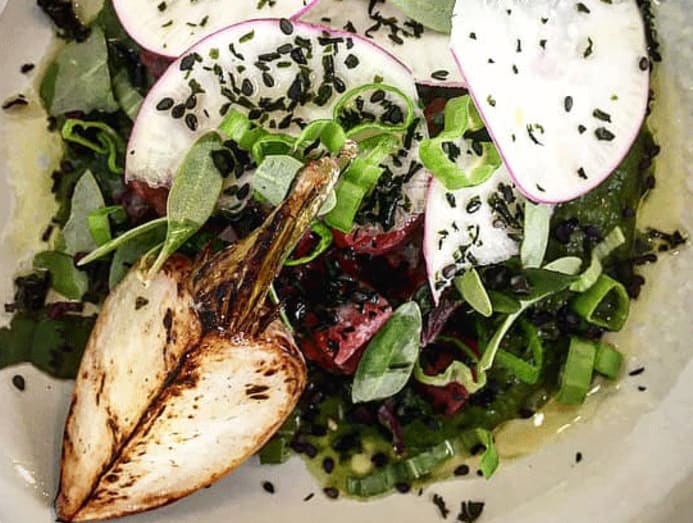
“I wanted to write my own story,” Caute said as we enjoyed a glass of wine over lunch of her decision to buy her own little place in Belleville and turn it into the neighbourhood dining room seven years ago. “All of the women in my family cook a lot – it’s passed down through the generations.”
For each residency, a chef is paired with a sommelier, so the wine selection is constantly shifting. Caute’s only rule is that the offerings have to be organic and biodynamic. Of natural wines, she said: “At some point, there is no way back to traditional – the taste, how it’s made, the philosophy and the respect for nature.”
Bottles range from €28 to €42. Prix-fixe lunch menu is usually about €20; dinner mains are from €15 to €25. More information here.
LE JOURDAIN
101 Rue des Couronnes, 75020 Paris
A steep climb up the terraced slope of Parc de Belleville, through trellised tunnels and well-attended outdoor tai chi classes, brings you to the top of the park, where a stunning view of the capital awaits. Five minutes from here, you will be rewarded further with Le Jourdain: Chic, petite and serving impeccable wines.
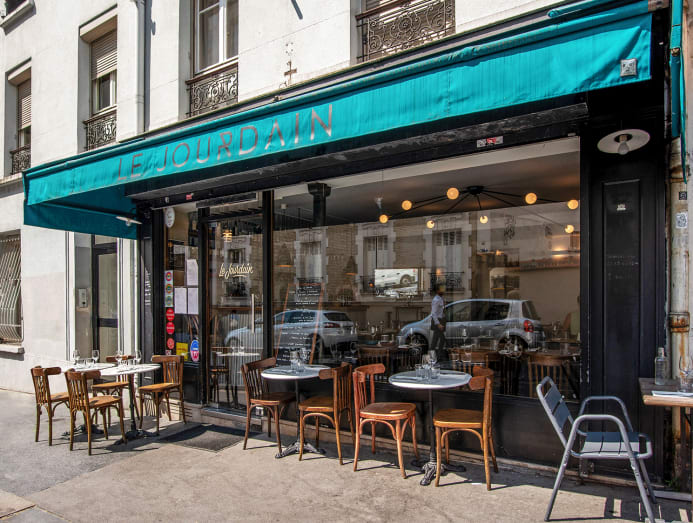
“I wanted to make a small neighbourhood restaurant and prove we can feed people with good products, without having to pay a big bill, with nice wine and no bullshit,” said Jean-Baptiste Jay, or JB, the owner.
Heading the kitchen is Celia Nguyen, who serves classic French food with a twist, often introducing Asian ingredients or increasing the acidity of traditional plates. Nguyen’s main focus is fish and seafood – ceviche and other raw fish dishes are a staple on the menu – and the restaurant works closely with local fishmongers who catch fresh fare everyday.
While there are nods to classics (sausage with lentils), more often the menu brings a broad smile and a cheeky taste of indulgence (taramasalata with truffles and crispy sriracha duck hearts).
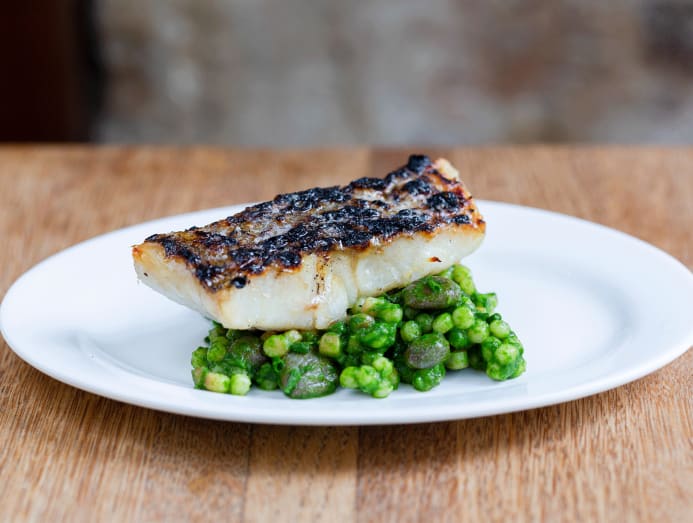
We enjoyed a selection of lovely small plates, including indulgent salt cod croquettes, aubergines bathed in a soy-based sauce with herbs, burrata with apricots and hazelnuts, veal tartare and grilled leeks. For dessert, we shared an impeccable creme caramel.
The meal was paired with a dry and aromatic natural white wine, which the waiter picked for us and matched the food perfectly. The cheapest bottle is €27, and most are between €30 and €40 because, as Lax explained, “We don’t want to be elitist and we want to ensure it’s accessible.” If you’re feeling flush, there is a Bordeaux for €195.
Lunch menu is around €18 to €24; small plates (dinner) are from €7 to €14. More information here.
PALOMA
93 Rue Julien Lacroix, 75020 Paris
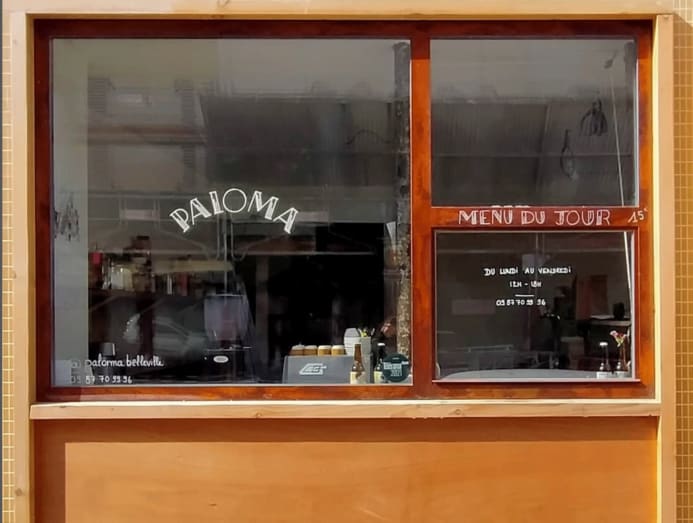
Tucked away on a side street between Parc de Belleville and the bustling Rue de Belleville is a treasure that opened its doors only last year. Former fine-art students Marie-Anna Delgado and Olivia Brunet have created a small neighbourhood bistro serving a creative array of constantly changing small plates.
The dishes have a traditional flavour, heavily influenced by rural French cuisine. More often than not, you’ll find snails and some kind of offal – tete de veau (veal’s head) is a major player in the repertoire.
“You can eat things that scare you here, but we’ll do them in a way you love,” says Brunet, a cabinet-maker by training who designed the pared-back wood-panelled interior and terrace from scratch.
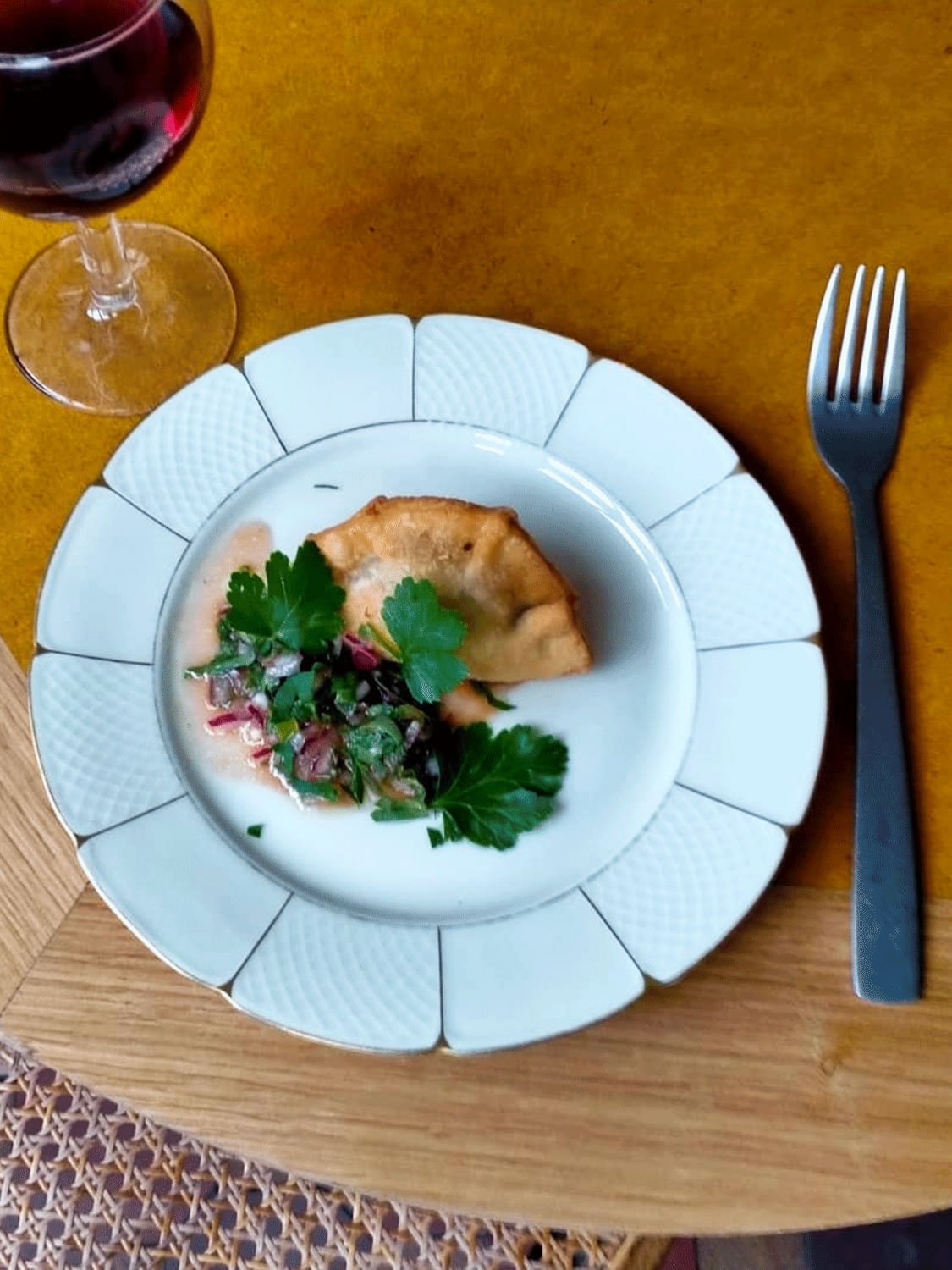
We enjoyed the comforting but delicate crab broth, with braised endives and bottarga, beautifully cooked ray wings with capers, and a risotto with celery, Parmesan and walnuts. For dessert, baba au rhum (rum baba) is almost always on the menu and is a favourite among regulars, as is another rural classic of prunes soaked in Armagnac.
The vast majority of the wines are natural and organic, including selections from all regions of France that are rarely found on more classical menus.
You will almost always find the restaurant teeming with people. The wooden terrace is the perfect place to enjoy a summer’s evening and soak up Belleville’s buzz with the venue’s signature cocktail: That tequila classic, a Paloma.
Prix-fixe lunch menu (Monday-Friday) at €15; small plates (dinners and weekends) from €6 to €15. More information here.
LE CADORET
1 Rue Pradier, 75019 Paris
Nestled amid the shops on Rue Pradier, Le Cadoret is a lively restaurant serving traditional French cuisine with a touch of Asian influence.
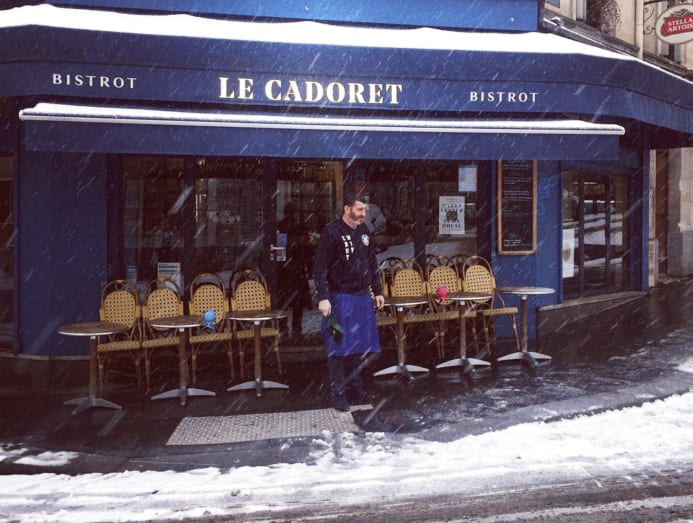
It has been praised for its “biblical simplicity”. The owner and head chef Lea Fleuriot serves up a menu that changes almost daily, using ingredients sourced from local producers. She regularly features cult classics such as her chicken terrine, breaded free-range pork knuckle served with braised endives, and haddock in beurre blanc sauce and cockles.
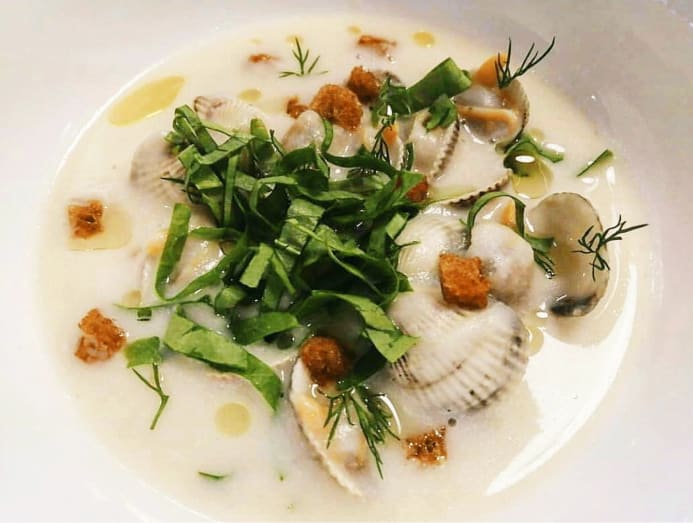
The menu is complemented with a great selection of natural wines from around France, which changes constantly throughout the year.
We enjoyed gnocchi with crab to start, and for the main course we had pollock in a buttery white wine sauce, and a raie grenobloise and potato dauphinoise. We managed to find space to share perfectly prepared and melt-in-your-mouth choux pastries, filled with lemon, praline and sesame cream.
“Our dream was to open a place with comfort food, with good drink, that’s not too expensive,” Fleuriot said, “and that’s not too easy to find in Paris.”
What she has also created is a venue where time can easily slip away. You could come here at 8am for your morning coffee and find that you haven’t left by midnight.
Prix-fixe lunch menu at €20; starters from €9 to €11; mains from €21 to €23. More information here.
AMA SIAM
49 Rue de Belleville, 75019 Paris
Though Ama Siam opened at the start of 2020, its story goes against the grain of gentrification in the neighbourhood. The Laotian, Vietnamese and Chinese joint was opened by three brothers, sons of the owners of the popular southeast Asian restaurant next door, Lao Siam.
While the mother restaurant serves sophisticated and classic Laotian and Thai dishes, brothers Nicolas, Frederic and Alexandre Souksavanh wanted to set up a laid-back place that did the food they ate at home as kids – the stuff their parents would never countenance offering to paying western clientele.
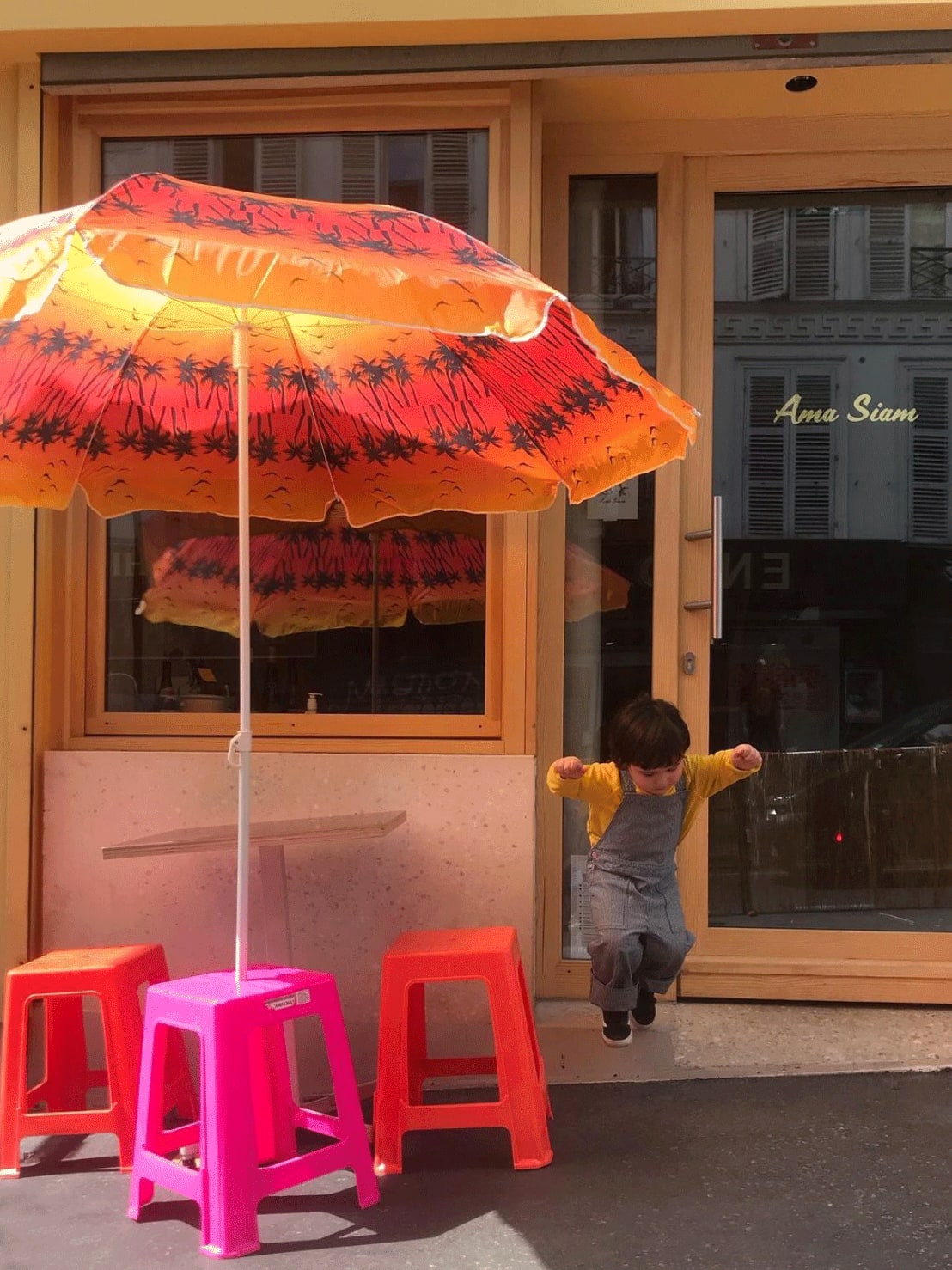
All of the dishes have been modelled on food cooked by the brothers’ mother, who passed away last year. Before the restaurant opened, she spent hours in the kitchen teaching Nicolas and his wife how to prepare each one.
When Nicolas confessed to his mum that he would prepare food with nam prik kapi – a Thai sauce made with chillies, fermented shrimp paste and lime juice that was always on the dinner table at home – she was horrified. “What we wanted to share with people was the cooking of our childhood. The cooking of the heart,” said Nicolas, who worked at his parents’ restaurant for many years.
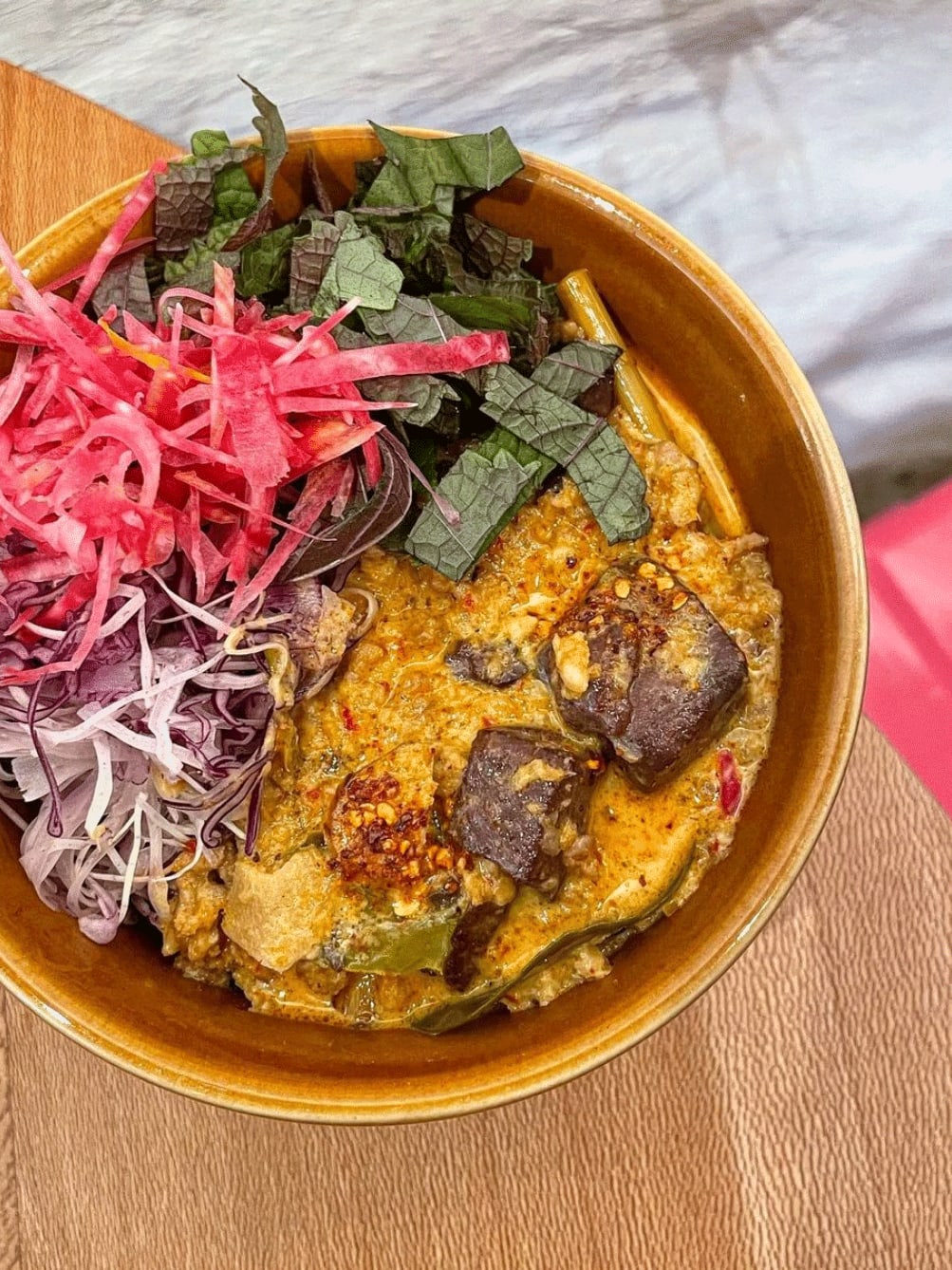
The small selection of dishes are fresh, zingy and delicious. We enjoyed a variety of small plates, including cockles with Thai basil, lemongrass and fermented haricot beans, and grated coconut, shallot, ginger and peanuts wrapped in a wild betel leaf.
Though the menu changes roughly once a month, some dishes stay put by popular demand, such as moo pralo (pork belly, five-spice sauce, wild rice, and a soft-boiled egg) and khao man kai (chicken and ginger rice in a haricot fermented sauce).
The wine menu is – as with most trendy new joints in this part of the city – almost exclusively natural and organic.
Nicolas admits that the neighbourhood has changed a lot over the years, but he notes it remains broadly a working-class "quartier", and when he walks down the street, he is greeted by many of the same restaurateurs and shopkeepers he met as a kid. “The place has evolved,” he said, “but at its base, the spirit is the same.”
Dishes are from €6 to €22. More information here.
By Anna Gross © 2022 The Financial Times







